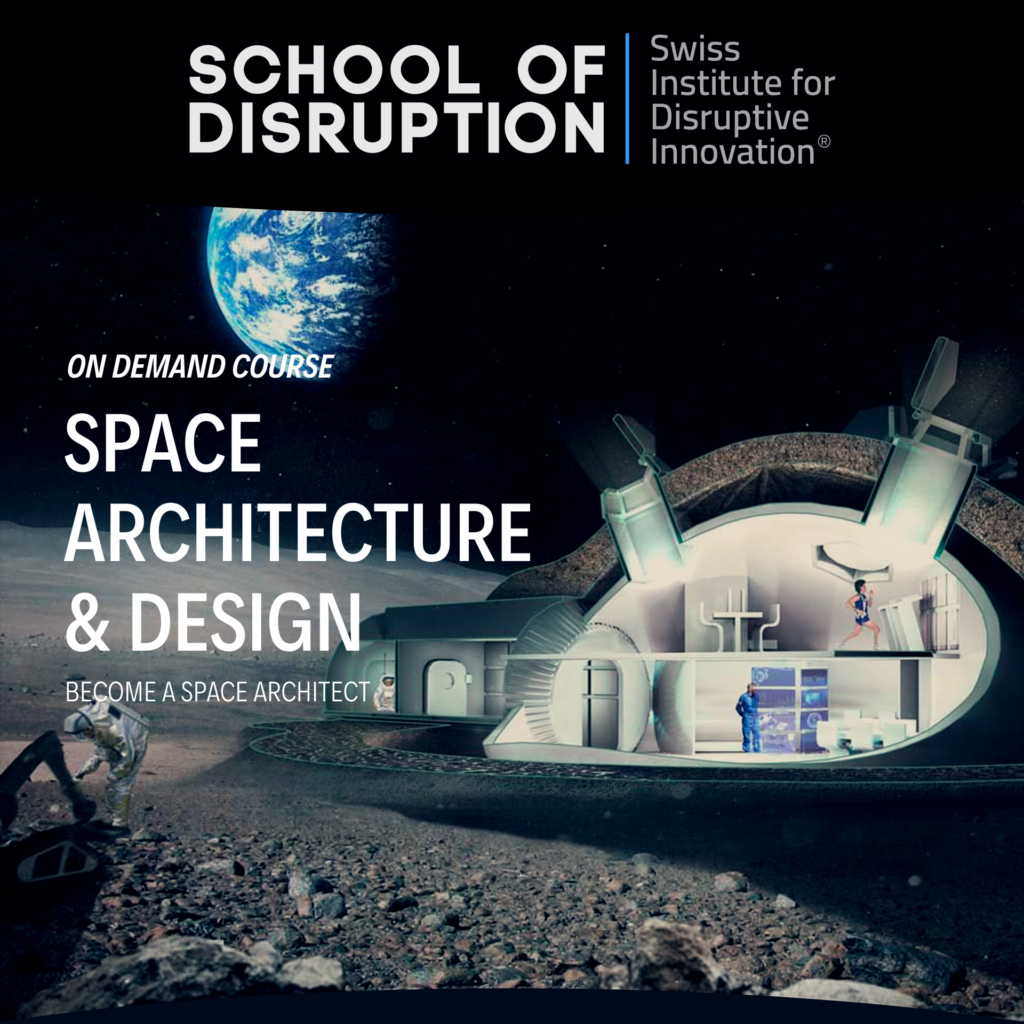1- The Earth will become uninhabitable
“New altitude data triples estimates of global vulnerability to rising sea levels and coastal floods” 1. This is confirmed by Climate Central in a study published in the journal Nature Communications, which claims that by 2050 sea levels will rise and flood most continents, especially Asian ones, endangering the lives of about 150 million people2. The Earth could therefore become uninhabitable. The role of the architect in proposing a solution becomes fundamental: is it possible to inhabit the oceans, or do we have to think about bringing man to another planet?
Here it becomes necessary to acquire skills on the discipline of Space Architecture, which makes it possible to make habitable a place uninhabited until now: the Space beyond the Earth and its orbit. The mission od Space Architecture is to put man at the center, transforming uninhabitable places, with extreme climatic and physical conditions, into living environments in Earth-like conditions. This huge and distant but ever closer challenge is possible with Space Architecture!
1 https://www.nature.com/articles/s41467-019-12808-z
2- A bridge between science and science fiction
The Space architect has a great responsibility towards all of humanity: he will take man to another planet, playing the role of “bridge between science and science fiction” 3.
Futuristic cities that we dreamed of as children, where Princess Laila and Luke Skywalker land with their spaceship, are today the subject of study for a future and real colony on another planet: learning from our ancestors and, at the same time, with the help of the knowledge and advanced technologies we have at our disposal, it is possible to live in an extreme place beyond the borders of the Earth, as in science fiction films.
Setting as a limit the extreme environmental characteristics that characterize the still uninhabited planets of the solar system, such as their distance from the Earth, the need to build in the most standardized way possible, the need to limit space and the use of resources, the Space architect will be able to build a first human settlement, which in the even more distant future will probably characterize an archaeological area to be protected, a monument to the first interplanetary future city.
3 https://www.youtube.com/watch?v=K8qXZOjLQ70&t=79s
3- Architecture beyond the terrestrial horizons
Approaching Space Architecture requires opening the human mind to a new world, detaching oneself from one’s certainties and knowledge in order to be able to open up to others that are totally new and, although complex, extremely stimulating. It is therefore not a trivial matter to look into Space Architecture, but certainly an arduous and exciting challenge!
The architect, as we are accustomed to understanding him on Earth, therefore “traditional”, must not place great restrictions on his ideas of architecture: legal restrictions, associated with environmental restrictions, certainly do not endanger human life and thus the idea of the Project. A space architect, unlike an architect on Earth, must take the capabilities of a common architect to the extreme, that is, he must expand his horizons beyond those of a simple discipline. Space architect knows aeronautical engineering, bioastronautics, astrophysics, and above all he must be able to think about human beings communicate with a minimal space that must guarantee functionality and psychological well-being. As space architect Anastasia Prosina says, “The mission of spatial architecture is to break the monotony of a small space habitat and ensure that design helps mitigate the risks associated with isolation.” 4.
4 https://www.universetoday.com/146399/what-does-it-mean-to-be-a-space-architect/
4- Space Architecture: the work of the future
More and more companies are investing in Space Architecture and Space conquest globally: we could talk about a scenario similar to that of the second postwar period, when Russia and the United States began to compete for Space conquest. Can we talk about a new Space Age? Who are the powers in the field?
It is Elon Musk, founder of the US aerospace company Space X, who marks the beginning of this new era, launching, last May 30, two astronauts aboard the Crew Dragon spacecraft from Cape Canaveral, Florida, to the ISS. It was the first manned flight in nine years5.
Within this new Space Age, private investments have marked a turning point: on May 14, 2019, NASA’s Artemis program is made public, with the aim of bringing man back to the moon by 2024. Contributing to the construction of a new future on the Moon alongside NASA is the architectural firm BIG (Bjarke Ingels Group), which by collaborating with ICON, a company of new construction technologies, and with the SEArch + group, has designed a human settlement, the Moon Village6.
It is clear that private investors, space companies and agencies, large international architectural firms and space architects are gathering to bring man beyond planet Earth. Space Architecture plays a leading role in the new Space Age and will bring human life to other planets still unexplored.
6 https://www.archpaper.com/2020/10/nasa-big-search-icon-project-olympus/
5- Space Architecture for sustainable life on Earth
Extreme isolation of man, distance from Earth, living in a place never inhabited and the primary need to guarantee survival and human life, leads Space architects to take knowledge and skills useful for minimizing human activities and maximizing autonomy, self-sufficiency and sustainability of structures and infrastructure of new and future planetary cities. Given the global climate crisis that makes the Earth more and more similar to the still uninhabited planets of the solar system in terms of inhospitable to humans, it may become necessary and useful to resort to the space architect to adopt the basic principles of space architecture on Earth: building new architectures using automated machines and 3D printers and recycling natural resources, life that is foreign to us and so far could become a new and better life on Earth.
Are you interested in Space Architecture? Buy now the discounted course from SIDI here!







